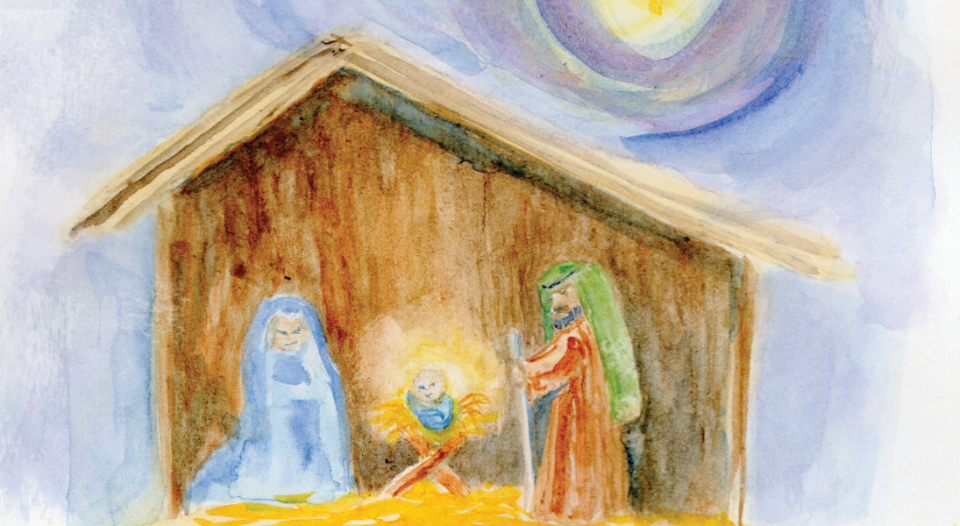Author’s note: Lutherans and other hymn lovers may be surprised to learn how many of their favorite hymns come from medieval texts. Can anything good come out of the “Dark Ages”? Martin Luther thought so; he adopted and adapted multiple hymn texts from the Middle Ages, both Latin and German. This is the final entry in a four–part series exploring examples of pre-Reformation hymn texts in their historical contexts and sequence.
“Savior of the Nations, Come” (Evangelical Lutheran Worship, 263), which Lutherans have long sung as the first hymn of Advent, is a good example of “our medieval hymns,” especially from Martin Luther’s perspective. The hymn writer was St. Ambrose (340-397), the bishop of Milan, Italy, and a well-known author of hymns and theological treatises.
In 374, while serving as the Roman Empire’s governor of the Milan area, Ambrose monitored a contested election for the city’s new bishop. Unexpectedly, he found himself acclaimed as the church’s leader. Though just a catechumen (inquirer) at the time, he was baptized, ordained a priest and installed as the bishop during a single week of Advent in 374, becoming the envy of impatient ministerial candidates ever since.
For Ambrose and for Luther, the incarnation was God’s rescue mission down into our mortal coil and back up to immortality.
The more-famous St. Augustine (354-430) was inspired by Ambrose’s preaching and presented himself to the bishop of Milan for baptism at the Easter Vigil of 387. Augustine’s Confessions testify to the importance of Ambrose’s antiphonal psalmody and hymns in Milan, especially in the ongoing dispute over Christ: Was he really God? Another hymn by Ambrose, “O Splendor of God’s Glory Bright” (ELW, 559), echoes the Nicene Creed: Christ is “light from light.”
“Savior of the Nations, Come” also champions that same Nicene view of Christ’s full divinity. The creed states that Jesus is “true [very] God from true [very] God,” not a lesser being as some thought then and as many think today. When we sing “Very God, and Mary’s son” (stanza 3), we are making the creed’s strong claim that Christ is really God, not a different being or a lesser divinity.
A father of the church
Luther knew and cited Ambrose often as a father of the church, especially for his hymns. Where Ambrose, in “Savior of the Nations, Come,” affirmed that Christ was “equal to the eternal Father” (in a stanza omitted from the ELW), Luther translated it quite faithfully as an expression of the Nicene Creed. For Ambrose and for Luther, the incarnation was God’s rescue mission down into our mortal coil and back up to immortality. No wonder that the “manger, shining bright, hallows night with newborn light” (stanza 5).
Neither Ambrose nor Luther worried about a strict separation of Advent and Christmas, because the one season leads directly to the other.
Luther’s respect for Ambrose and his hymnody, which included translating his “O Trinity, O Blessed Light” (ELW, 571), is only one portion of his substantial reception of medieval texts for singing. He translated and paraphrased the anonymous classic “Te Deum” (“We Praise You, O God,” ELW, 227-28 and “Holy God, We Praise Your Name,” ELW, 414), noting its legendary association with Ambrose and Augustine. He adapted “Creator Spirit, Heavenly Dove” (ELW, 577-78 from earlier in this series) and made another medieval text the starting point for his powerful Easter hymn “Christ Jesus Lay in Death’s Strong Bands” (ELW, 370).
“Marvel now, O heaven and earth: God has chosen such a birth.”
Several other times Luther took a brief and familiar medieval text, and sometimes the tune, and made it the first stanza in a larger hymn. The familiarity of that stanza would help get the singing started, then Luther added stanzas with a Reformation message. For three more examples see “Come, Holy Ghost, God and Lord” (ELW, 395), “Now to the Holy Spirit Let Us Pray” (ELW, 743) and the communion hymn “O Lord, We Praise You” (ELW, 499).
In all, ELW contains about a dozen Luther hymns based wholly or partly on medieval texts, besides the many other texts he used from Scripture, the catechism or the liturgy. Medieval authors from the fifth century (Sedulius) to the 15th (Jan Hus), known or unknown, supplied Luther and his colleagues with materials worth adapting into hymns for the evangelical movement. Texts that were originally poems, processional songs or monastic chants became hymns for home and parish in the new and enduring sense of congregational singing.
“Savior of the Nations, Come” was already over a thousand years old when Luther used it for the first three Lutheran hymnals in 1524. Their quincentennial is upon us now, yet we may still sing the hymn this Advent.
Savior of the nations, come; virgin’s son, make here your home.
Marvel now, O heaven and earth: God has chosen such a birth.




